China During The Early
Days Of The Reform
(source: Wenxue
City)
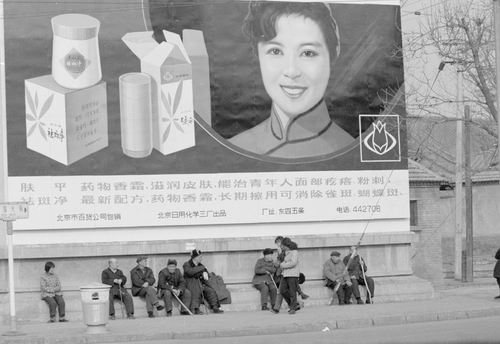
The first large female beauty advertisement board in Beijing.
(1970, intersection of Shatan Street)

Sunglasses with the brand sticker preserved on the glass to indicate that it was
an import.
At first, the media criticized the practice.
Today this is regarded as the first awareness of the meaning of brands.
(1980 Beihai park)

When the ban on public dancing was lifted, dancing to rock 'n roll music was
still remote.
The spectators stood far apart, and injected occasional criticisms.
(1979 Summar Palace, Beijing)
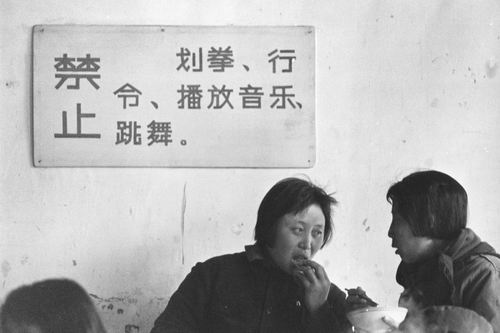
Signing: "Banned: Finger-guessing games, shouting games, music playing,
dancing"
The lifting of the bans led to other behaviors such as drinking games that had
to be banned again.
(1982 Summer Palace restaurant, Beijing)

In 1986, a modern American contemporary art exhibit was held in Beijing,
and shook up the Chinese art world, media and critics.
The spectators were befuddled.

In the late 1970's and 1980's, youth fashion wear was wool hats, large scarves,
military long coats and imported sunglasses.
(1980 Beihai Park)

In the late 1970's and early 1980's the media spoke often of gender equality and
female liberation.
It was a common phenomenon for men to hold umbrellas for women and carry their
bags.

The Chinese visitors at the Imperial Palace came not to view the palaces or the
treasures within.
They came to watch to watch the foreign tourists.
In 1978, the legend was that a foreign tourist group was surrounded
by 100,000 tourist-watchers in Lanzhou.
(1980 Imperial Palace, Beijing)
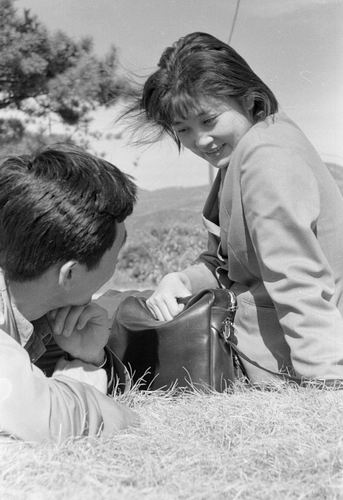
This photograph was criticized as "capitalist romanticism."
(1979 Yingtaogou)

In the mid-1980's, Chinese women finally dared to wear red.
In the summer, they wore red skirts;
in the winter, they wore red down-feather jackets.
There was a movie titled "Red skirts are popular in the streets."
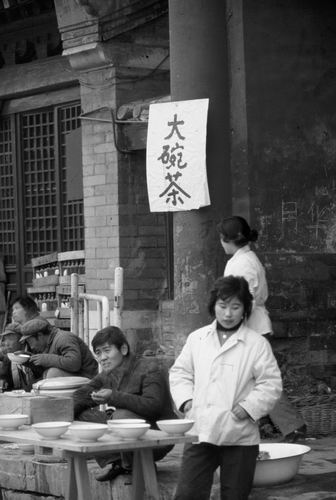
There wasn't the vast array of beverage choices today.
The "big-bowl of tea" was popular, at 2 cents a bowl.
(1981 Imperial Palace)

The "Gang of Four" puppet figures
in front of the Youth Art Performance Theater.
(1977 Beijing East Changan Street )

Artist Yuan Yunsheng spent 20 years away as a "rightist."
He was responsible for the infamous "Water Splashing Festival"
wall painting at the Beijing Capital Airport
that became the focus of the debate on cultural control.
(1979-1980 Yuan Yunsheng's home)
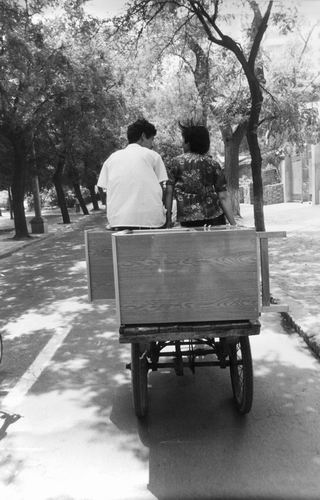
When young people got married in the late 1970's/1980's,
they receive a purchase permit.
After standing in line overnight,
they can buy one piece of furniture.
(1980 summer)

The shy encounter between the Imperial Palace and the Red Flag car
in the preliminary phase of the new market economy.
(1980 winter, Beijing Imperial Palace)

Yves St. Laurent's fashion collection at the Chinese Art Museum
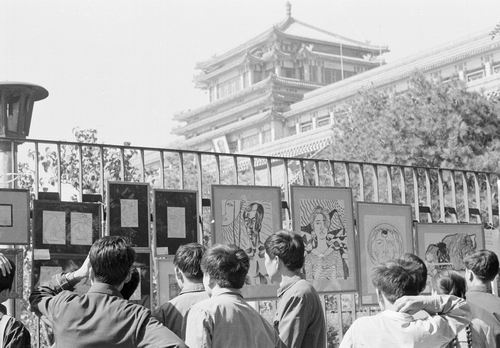
Street art exhibit outside the Chinese Art Museum,
marking the renaissance of culture and art.
(1979 Beijing)

The Xidan democracy wall appeared after the Gang of Four was smashed.
The custom of big-character wall posters allowed the people a window of
expression.

In February 1989, the first Chinese Contemporary Art Exhibit was held at the
Chinese Art Museum.
Here were the artists performing on "No Turning Back" signs.

Hair-perming re-appeared after the Cultural Revolution.
(1977 summer, the Siluan Hairdressing Salon, Wangjingfu, Beijing)